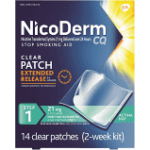Serving Up Incredible Information in Your Business Blog

For years now, as a blog content writing trainer, I’ve been preaching the use of seemingly “useless” tidbits of information to spice up business blogs, engaging readers’ curiosity, and evoking an “I didn’t know that!” response.
Tidbits can be used to:
- describe your way of doing business
- clarify the way one of your products works
- explain why one of the services you provide is particularly effective in solving a problem.
While one goal of any marketing blog is to help your business “get found”, once that’s happened, the goal changes to helping the online readers get comfortable with the way you do business. Blog content writing is the perfect vehicle for conveying a corporate message starting with a piece of trivia.
Owners of a grocery store or a food delivery service company, for example, might include trivia about food spoilage in their blog, highlighting their own food safety procedures.
Myth: Food should be defrosted on the kitchen counter.
Truth: When a whole chicken, is left to defrost on the kitchen counter, the surface will defrost first, allowing bacteria to multiply while the inside is still frozen.
Owners of a health food store might blog about a widespread misunderstanding about spinach, highlighting the body’s need for iron and other nutrients.
Myth: Spinach is a superior source of iron, with ten times the iron content of other green leafy veggies.
Truth: Despite Popeye’s claims, the oxalic acid in spinach prevents the body from absorbing more than 90 percent of the vegetable’s iron.
A realtor’s blog might discuss the perception that a 30-year mortgage is the least expensive option.
Myth: The longer the payment period, the cheaper the payments will be.
Truth: You could end up paying more during the life of the loan if you pick the 30-year option instead of the 15-year mortgage.
Common myths surround every business and profession. If you notice a “factoid” circulating about your industry, a common misunderstanding by the public about the way things really work in your field, you can use a little-known tidbit of information that reveals the truth behind the myth.
Serve up “incredibly” credible information in the form of mythbusting tidbits in your blog.





Follow us online!